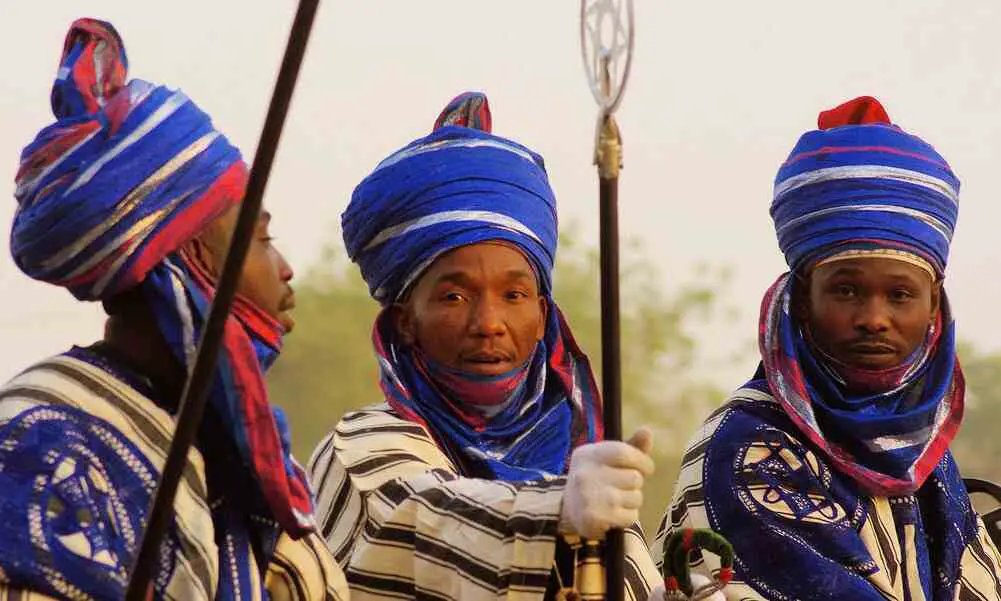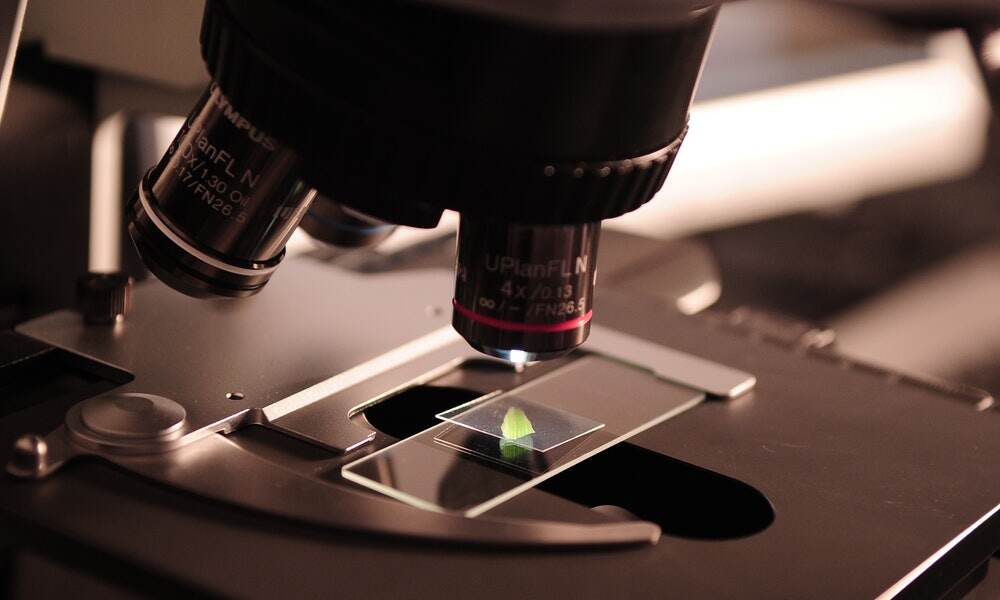Northern Nigeria is a region situated towards the north side of Nigeria. Interestingly, these regions possess certain characteristics that differentiate them from other regions of the country and the world at large. These differences span across the lifestyle of its inhabitants, historical features, and happenings that took place in this region. Hence, to aid an easy understanding of northern Nigeria we have compiled 100 facts about northern Nigeria.
Interesting Facts About Northern Nigeria
1. Northern Nigeria is the most endowed region in the country with many tourist attractions. This includes the Emir palace in Kano, Chappal Waddi in Taraba, Yankari Game Reserve, and much more.
2. Nigeria North occupies 80% of Nigeria’s landmass, it’s four times larger than the South.
3. In 1967, Northern Nigeria was broadly divided Into North—Eastern States, North-Western States, Kano State, Kaduna State, Kwara States, and the Benue—Plateau State, each with its own Governor.
4. The Nok civilization, ancient culture in prehistoric times, associated terracotta statues, and megaliths have been discovered in northern Nigeria.
5. The northern part of Nigeria is known for its primary export of goods from historical times. Most especially, leather, gold, salt, clothes, kola nuts, and animal hides.
6. Some of the current states once existed as Kingdom long before now like Kano, Katsina, and Zazzau (Zaria)
7. The Hausa architecture in the North is the most beautiful during the medieval age as seen in the design of ancient mosques and palaces.
#Hausa #Traditional #architecture pic.twitter.com/iWw3Aa79tq
— Hausa Traditional Architecture (@ArchHausa) December 19, 2021
8. Northern Nigeria gained self-government on 15 March 1957 with Sir Ahmadu Bello as its first premier.
9. The main source of revenue for Northern Nigeria is cotton and groundnut industries, tin and steel mining.
10. Cement industries and leather processing industries constitute the main manufacturing sector of the North.
11. Northern Nigeria although religiously and ethnically diverse has its majority of Muslims, especially the Hausa speaking tribe.
12. Kano state was traditionally founded by a blacksmith named Kano from the Gaya tribe who in ancient times came to Dallas Hill in search of iron.
13. Kano is a home for numerous traditional industries that includes leather tanning and decoration, mat making, metalworking, tailoring, pottery manufacturing, and local dye pits for cloth and leather used for centuries.
14. Northern Nigeria comprises 19 states. North Central – Benue, FCT, Kogi, Kwara, Nasarawa, Niger, Plateau. North East – Adamawa, Bauchi, Borno, Gombe, Taraba, Yobe. North West – Kaduna, Katsina, Kano, Kebbi, Sokoto, Jigawa,, Zamfara.
15. The richest person in Africa and the richest black person in the world is from northern Nigeria, Kano state—Aliko Dangote. He had an estimated net worth of US$12.7 billion as of September 2021.
16. The Arewa Knot is an ancient traditional symbol associated with northern Nigeria particularly the Hausa-dominated areas.
17. An average man from the north is always glued to his radio in search of current information.
18. According to Lord Luggard, “the north is the most literate part of Nigeria.” There are 25,000 Quranic Arabic schools with about 250,000 pupils in the North.
19. Kumbwada village in Kano is the only part of Northern Nigeria where only females can rule, an ancient curse keeps men off the throne.
20. Usman dan Fodio(1754—1817) was trained in classical Islamic science, philosophy, and theology. He has written over 100 books on society culture, religion, governance, and politics.
21. Did you know that Benue, Nasarawa, and Plateau states have the highest populations of Christians in Northern Nigeria?
22. In 1851 Kano state made 10 million sandal pairs and 5 million hides for export every year.
23. One of the largest cities in Africa is located in the north—Kano state.
24. Katsina State was formed out of Kaduna state on September 23, 1987, by General Gbadamasi Babangida.
25. Katsina state is known as the “Home of Hospitality” because of the courtesy and politeness of its inhabitants.
Fun Things About Northern Nigeria
26. The system of “Sarauta” beginners in Katsina state. This system is a title awarded to men and women in Hausa land who have served the community positively, although it varies from rank to rank.
27. Did you know that Islamic religion came into the north through Katsina state? This was due to the arrival of Wangarawa Dyula scholars and merchants in the 14th century into the state.
28. Historically, “Kusugu Well” in Daura once had a giant snake that prevented residents from fetching water on specific days of the week. Fortunately, it was killed by Bayajidda during the reign of Queen Daurama.
29. Katsina Teachers College was the first higher learning institution established in Northern Nigeria in the year 1923.
30. Salt, diamonds, graphite, potash, and many more natural mineral resources are located in Katsina State.
31. The Kanuri-speaking tribe is more concentrated in Borno state.
32. Interesting physical features can be found in Borno states like Black cotton swamps, volcanic Biu Plateau, and Borno plains.
33. Borno is the second largest state in Nigeria in terms of landmass( 72, 609square kilometres)
34. Did you know that there are descendants of the Arab people in Borno state known as shuwa Arabs?
35. Current Yobe state emerged from Borno state.
36. The only five stars rated hotel in the North-Eastern part of Nigeria is located in Borno state—Deribe hotel in Maiduguri.
37. Feldspar and Magnetite are mostly found in Borno state.
38. The popularly known Chad Basin National Park is located in Borno state. The park has a total area of about 2,258 km2.
39. Northern Nigeria states are vast in agricultural practices due to abundant fertile land and favourable climate compared with other regions.
40. Kaduna state was named by General Murtala Muhammad in 1976.
41. In the North, the most prestigious learning institutions are concentrated in Kaduna state. This includes Ahmadu Bello University, Nigeria Defense Academy, Air Force Institution of Technology and more.
42. Sadly, the assassination of Sir Ahmadu Bello, the Sardauna of Sokoto and Northern premier took place at Kaduna. He was killed by Major Chukwuma Kaduna Nzeogwu an Igbo Nigerian Army officer.
43. It’s believed that Kaduna derived its name from the Hausa word for crocodile, Kada.
44. The Nok Culture appeared in northern Nigeria around 1000 BCE and vanished under unknown circumstances around 500 CE, thus having lasted for approximately 1,500 years.
45. Beginning from the late 1950s, Kaduna state became the major industrial, commercial and financial center for the northern states of Nigeria.
46. The largest wildlife park in Nigeria is found in the North—Gashaka Gumti in Taraba state.
47. Mambilla plateau in Taraba Is the highest point in Nigeria, standing at about 1,600 meters above sea level.
48. Chappal Waddi in Taraba is the highest mountain in Nigeria which stands at 7,936ft above sea level.
49. Still to date, antiquities from the Ancient Nok civilization can be found in galleries and museums across the world.
50. Did you know that the River Benue divides Adamawa State into almost two halves?
Shocking Facts About Northern Nigeria
51. The popularly known Vernacular Architecture (VA) is found in Northern Nigeria. It’s also called Tubali in the Hausa language.
52. Ancient paintings which date back to the Neolithic period can be found in Dutsen Habude Jigawa state.
53. One of the largest cattle markets in West Africa is located in Jigawa state—Maigatari international cattle market which supplies about 2 million stock of cattle during weekly trade.
54. Niger state houses the three major hydro-electric power stations in Nigeria namely: Kainji, Jebba, and Shiroro stations respectively.
55. Niger state is the largest state in Nigeria based on the landmass, approximately 8.6 million hectares.
56. Interestingly, the famous River Niger is located in Niger State.
57. Niger is the largest producing rice and sugarcane state in Nigeria.
58. I’m sure you’ve heard about Guarara waterfall, it’s one of the most attractive sites in Nigeria and it’s found in Niger State.
59. Northern Nigeria is the home of Africa’s oldest dye pit, located at Kofar Mata in Kano state—which has been in existence since 1498.
60. The most irrigated state in Nigeria is located in the North, Kano state to be precise. It has more than 20 dams providing about 2 million cubic meters of water to support agricultural and industrial activities.
61. Surprisingly, the annual production of grain in Kano state exceeds 4million metric tons with an estimated value of N721.20b—that’s a lot!
62. Kano state is the most populous state in Nigeria according to the 2006 census with an estimated population of 4,103,000.
63. Did you know that Gidan Rumfa Emir’s palace is the oldest continuous site of authority in Nigeria? It’s the palace of the Emir of Kano and was constructed in the late 15th century.
64. The oldest museum in Nigeria is situated in Northern Nigeria, Jos, Plateau state. The Jos museum was established in 1952 by Bernard Fagg.
65. The warrior Queen Amina of Zazzau was known for building walls around every territory she conquered.
66. Recently, many of those walls built by Queen Amina are still standing, known as Amina’s wall.
67. Did you know that Queen Amina was the first woman to lead the kingdom of Zazzau to war?
68. Surprisingly, the Northern Knot, Arewa insignia has Christian origins from the church Celtic knot as investigated by Ibrahim A. Waziri.
69. The popularly known Arewa Knot is also called ‘Dagin Arewa’ or ‘Tambarin Arewa’.
70. The second largest University in Africa is found in Northern Nigeria known as Ahmadu Bello University Zaria founded in the year 1962.
71. Did you know that Lokoja was the first administrative centre of Nigeria because it was the first settlement of the British in Nigeria?
72. Research shows that the Arewa Knot is similar to the historic 6 pointed star seal of Solomon which Is also known as the star of David.
73. Did you know that Sultan Siddiq Abubakar III was the Sultan for 50 good years? He served as the 17th Sultan of Sokoto between 1938 and 1988.
74. Did you know that the first Mayor of Enugu city was a Fulani man from northern Nigeria In the person of Mallam Umaru Altine from old Sokoto province.
75. The first Teachers Association in Northern Nigeria was formed by Aminu Kano in the year 1948.
Truths About Northern Nigeria You
76. Throughout history Aminu Kano was the first presidential candidate to choose a female running mate.
77. Gaskiya Tafi Kwabo, a journal that was owned by the Nigerian government was the first notable Hausa newspaper that came into existence.
78. Sir Ahmadu Bello also known as the Sardauna of Sokoto was one of the politically influential men in the whole of Northern Nigeria.
79. Sir Ahmadu Bello was among the few selected individuals who redrafted the Richards Constitution.
80. The Arewa Knot is thought to represent Northern Nigeria’s power and political identity.
81. As a result of Sir Ahmadu Bello’s contribution to humanity the Nigeria N200 note carries His portrait.
82. Tambola dance is one of those popular dance moves within northern Nigeria.
83. The Hausa movie industry is popularly known as the Kannywood industry.
84. Rahama Sadau is the first northern actress ever to be featured in Nollywood Movies
85. In Northern Nigeria, Eid Kabir also known as ‘Babban Sallah’ or ‘Sallan Layya’ is celebrated by Muslims.
86. Miyan Karkashi interpreted as Sesame leaves soup is commonly consumed by the Hausa-speaking tribe in Northern Nigeria.
87. The name Nigeria was derived from the northern region coined in Lokoja, Kogi state. It was named by Flora Shaw when she gazed at the magnificent River Niger at Lokoja.
88. Kogi state in North Central is a junction state that leads to about 10 states within Nigeria.
89. The two greatest Rivers that cut across Nigeria are located in the North—River Niger and River Benue.
90. The largest steel and iron industry in Nigeria is located in Kogi state— Ajaokuta Steel Company and Agbaja iron mine.
91. Presently, the Arewa Knot is one of those features that depict unity among the northern states despite the diversity in tribe and culture.
92. Benue state is the most endowed state in Nigeria in terms of agricultural produce which includes yams, rice, cassava, potatoes, maize, millet, cocoyam, and lots more.
93. 70% of Nigeria’s soybeans production comes from the North, Benue state.
94. One of the highest waterfalls in Africa known as Farin Ruwa is found in Nasarawa State.
95. Africa oldest known boat ‘Dufuna Canoe’ is found in Nasarawa State
96. The biggest Game Reserve in west Africa is found in Northern Nigeria —Yankari Games in Bauchi.
97. Zamafara state was the first state in Nigeria to adopt Sharia Law, an Islamic legal system.
98. The Hausa Bakwai kingdom was established far back in the 7th to 11th centuries.
99. The Bayajidda legend was officially recognized under the Islamic government and institutions that were newly established after the 1804 Usman Dan Fodio Jihad.
100. The Gobarau minaret was built in the 15th century in Katsina. The minaret is believed to be one of West Africa’s first multi-story buildings and was once the tallest building in Katsina.









0 Comments